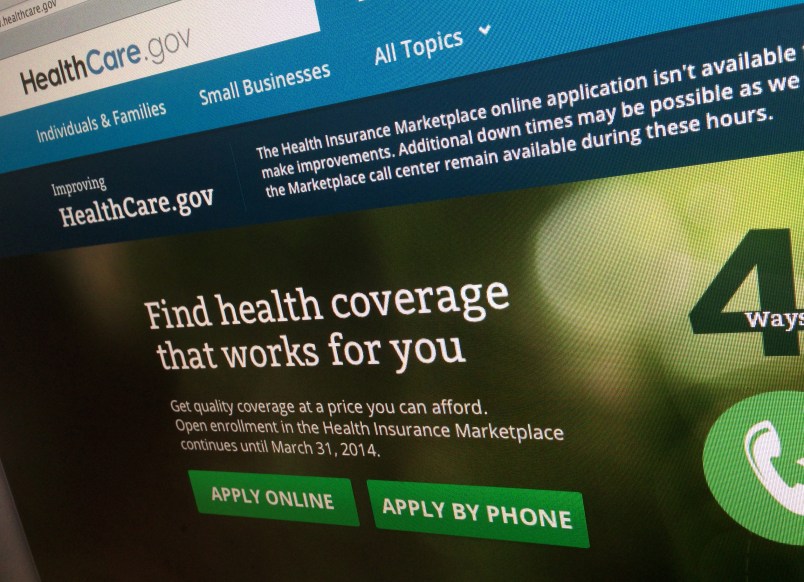Obamacare enrollment picked up in November, more than doubling the low numbers seen in October after HealthCare.gov’s troubled rollout, but the pace still lags behind the targets set by the Obama administration.
More than 250,000 people enrolled in private plans last month through HealthCare.gov and the state-based marketplaces, according to a report released Wednesday by the U.S. Department of Health and Human Services. Add in the 100,000-plus who enrolled in October, and the two-month total comes to nearly 365,000.
But that figure falls short of the administration’s pre-launch goals. The White House had been aiming for 500,000 private enrollments in October alone. By the end of 2013, the target was 3.3 million, leaving the administration with a lot of ground to make up this month.
Administration officials still expressed confidence that they could reach their ultimate goal: 7 million enrollees by March 31, 2014.
“We think we’re on track, and we’ll reach the total that we thought,” Michael Hash, whose office is overseeing Obamacare implementation at the U.S. Department of Health and Human Services, told reporters Tuesday. “We’re only two and a half months into a six-month open enrollment period. Based upon experience such as that in Massachusetts, we expect that a bulk of enrollees will occur toward the end of the enrollment period.”
The administration previously said that preliminary enrollment figures rose sharply in the first two days of December, after HealthCare.gov was officially fixed. December data was not included in the report HHS released Wednesday. Officials have long predicted that sign ups would surge ahead of the the first enrollment deadline, which is now Dec. 23, after being pushed back from Dec. 15. People who sign up by Dec. 23 are assured of having coverage in place as of Jan. 1, when many existing individual health care plans expire.
As in October, the 15 state-based marketplaces continued to outpace HealthCare.gov, serving 36 states, in enrollment. They have combined to enroll more than 227,000 in the last two months, while 137,000 have signed up through the federal website, which the administration did not officially declare fixed until the end of November.
California (107,087), New York (45,513), and Florida (17,908) have recorded the most enrollments in the first two months. The first two are running their own marketplaces; Florida is using HealthCare.gov. But the website’s struggles still seem to have slowed enrollment in larger states: Kentucky (13,145), which built its own website, signed up nearly as many people as Texas (14,038), which has relied on HealthCare.gov.
However, HealthCare.gov did increase its rate of enrollment at a much faster rate than the state-based marketplaces. The federal website’s enrollment went from less than 27,000 in October to 137,000 by the end of November; the combined state website total grew from about 80,000 to 227,000.
![]()
According to HHS, 1.9 million people have had their eligibility for a plan and financial assistance determined, but have not selected a health plan yet. That population will be a focal point for the administration in the next few weeks, as the Dec. 23 deadline approaches to enroll in coverage that starts in January.
“We are in an active conversation with individuals who have come into the system and have not completed enrollment for one reason or another to make sure that they know they’re invited back in and that they know the next steps in order to complete their enrollment successfully,” Aaron Albright, a spokesman for HHS, told TPM.
One critical unknown is the demographic breakdown of the enrollees, which some experts say is more important than the actual number of enrollments. The administration projected that about 40 percent needed to be young and healthy for Obamacare’s finances to work, but has not yet released any data beyond the raw enrollment numbers.
In addition to the 365,000 enrollments in private coverage, the insurance marketplaces have determined more than 800,000 people were eligible for Medicaid — they either qualified under the law’s expansion or were already eligible but not enrolled — bringing the total number of people being funneled into health coverage through the marketplaces to almost 1.2 million since Oct. 1.






